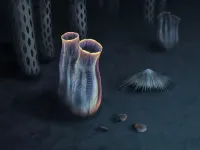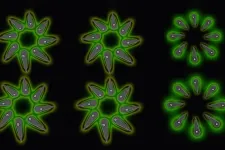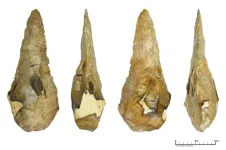(Press-News.org) VANCOUVER, Wash. – The invasive Asian clam is more common in the lower Columbia River than its native habitat of southeast Asia, according to a study of the clam’s abundance in the river.
The findings don’t bode well for potential future invasions by the even more destructive quagga and zebra mussels. So far, the Columbia is one of the only major U.S. rivers to remain free of these notorious ecology-destroying, equipment-clogging bivalves.
To understand how new invaders might spread, a Washington State University-led team studied the existing invasive Asian clams hoping to see what might limit them. Unfortunately, the answer was -- not much.
“What struck me was just the sheer variety of habitats that Asian clams were able to settle down in and survive,” said Salvador Robb-Chavez, a recent WSU master’s degree graduate and the study’s lead author. “We found evidence of their presence just about everywhere in the lower Columbia River.”
For this study, published in journal International Review of Hydrobiology, the researchers sampled 27 sites along 481 kilometers (about 299 miles) of the river, stretching from the ocean to Richland, Washington. They found Asian clams were able to live at a variety of temperatures, water quality and substrates, such as silt, sand or rock.
The team did find greater abundance of Asian clams below the Bonneville Dam than above it, and their greatest concentration, about 430 individual clams per meter, was found at the Sandy River confluence in Gresham, Oregon. The clams tended to be more prevalent in warmer waters and where slope of the bank or stream bed was less steep or more sandy, but few habitats were entirely devoid of Asian clams.
Considered global invaders, Asian clams have been found on almost every continent. The Pacific Northwest was one of the first places they landed in the U.S., arriving in the Columbia River around 1938, possibly released when a ship dumped its ballast water.
It takes just one Asian clam to start an invasion, since they self-fertilize. The Asian clams have disrupted the Columbia River food webs by eating up plankton that native mussels and salmon prey also need. They cause not only ecological but economic damage as well since they send plumes of larvae with mucus secretions that can clog up aquatic infrastructure.
While currently the Columbia River has a concerning Asian clam population, other places have even more, including East Coast rivers and Lake Tahoe in California, Robb-Chavez said.
And as bad as Asian clams can be, quagga and zebra mussels are worse. While they don’t self-fertilize, these bivalves still reproduce extremely rapidly. For example, a female zebra mussel can release as many as 40,000 eggs up to four times a year. They have already caused millions of dollars in damage in the Great Lakes, by clogging water intakes and threatening native ecosystems.
The Columbia River has so far avoided an invasion from these mollusks which originally hail from Russia and Ukraine, but as a recent scare of zebra mussel-infested moss balls sold for fish tanks shows, it will require vigilance to keep the river clear of them.
“Humans are often responsible for spreading invasive species,” said Robb-Chavez. “If you’re a boater, make sure that you clean out your hull, hold and trailer, according to Department of Fish and Wildlife guidelines. If you keep fish as pets, be careful you're not accidentally importing species with items you use in your tank, and be careful where you throw things away.”
In addition to Robb-Chavez, co-authors on this study include his advising professor Stephen Bollens and Gretchen Rollwagen-Bollens of WSU Vancouver as well as Timothy Counihan of the U.S.G.S. This research received support from the Washington State Lake Protection Association.
END
Asian clams’ spread in Columbia River warns of worse invaders
2023-07-06
ELSE PRESS RELEASES FROM THIS DATE:
Discovery of 500-million-year-old fossil reveals astonishing secrets of tunicate origins
2023-07-06
Karma Nanglu says his favorite animal is whichever one he’s working on. But his latest subject may hold first place status for a while: a 500-million-year-old fossil from the wonderfully weird group of marine invertebrates, the tunicates.
“This animal is as exciting a discovery as some of the stuff I found when hanging off a cliffside of a mountain, or jumping out of a helicopter. It’s just as cool,” said Nanglu, postdoctoral researcher in the Department of Organismic and Evolutionary Biology at Harvard University.
In a new study in Nature Communications, Nanglu and coauthors describe the new fossil, ...
Researchers grow precise arrays of nanoLEDs
2023-07-06
Halide perovskites are a family of materials that have attracted attention for their superior optoelectronic properties and potential applications in devices such as high-performance solar cells, light-emitting diodes, and lasers.
These materials have largely been implemented into thin-film or micron-sized device applications. Precisely integrating these materials at the nanoscale could open up even more remarkable applications, like on-chip light sources, photodetectors, and memristors. However, achieving this integration has remained challenging because this delicate material can be damaged by conventional fabrication and patterning ...
Pathogens Portal: The new gateway to public pathogen data
2023-07-06
EMBL’s European Bioinformatics Institute (EMBL-EBI) has launched the Pathogens Portal – an online platform that enables researchers, clinicians, and policymakers to access the most comprehensive collection of biomolecular data about pathogens. The portal features data spanning over 200,000 pathogen species and strains and is set to become a key tool for infection biology and pathogen surveillance.
The list of pathogens featured in the portal was collated using the UK’s Health and Safety Executive’s ...
Stressed rattlesnakes found to calm down in the company of a nearby ‘friend’
2023-07-06
When animals suffer from acute or chronic stress, they produce more hormones causing shifts in the nervous system, immune response, and behavior. Some animals, if they are in the presence of a conspecific, can modulate their response to buffer stress. This is known as social buffering.
There is some research suggesting that snakes can exhibit complex social behavior. Nevertheless, social buffering in reptiles, as well as in other asocial organisms and solitary foragers, hasn’t been studied extensively. Now, researchers in the US have examined if rattlesnakes inhabiting Southern California use social buffering to alleviate acute stress.
“We showed that when ...
A first for UCLouvain in the fight against organ transplant rejection
2023-07-06
Every year in Belgium, 1,600 people wait for a transplant. Of these, in 2021, only 939 received an organ. Thus more than 40% of patients often have to wait more than a year before hoping to receive a transplant. When a transplant is possible, it is essential to ensure its success so as not to “waste” an organ. One of the keys to successful transplants is an anti-rejection drug, tacrolimus, which patients must take for life. But it is extremely difficult to dose this drug correctly, which can lead to significant risks of transplant failure in the event of underdosing and significant side effects in the event of overdosing (diabetes, hirsutism, hair loss, neuropathy or nephrotoxic ...
Giant stone artefacts found on rare Ice Age site in Kent
2023-07-06
UCL press release
Under embargo until Thursday, 6 July 2023, 00:01 London time
Giant stone artefacts found on rare Ice Age site in Kent
Researchers at the UCL Institute of Archaeology have discovered some of the largest early prehistoric stone tools in Britain.
The excavations, which took place in Kent and were commissioned in advance of development of the Maritime Academy School in Frindsbury, revealed prehistoric artefacts in deep Ice Age sediments preserved on a hillside above the Medway Valley.
The researchers, from UCL Archaeology South-East, discovered 800 stone artefacts thought to be over 300,000 years old, buried in sediments which filled a sinkhole and ...
New ferroelectric material could give robots muscles
2023-07-06
UNVERSITY PARK, Pa. — A new type of ferroelectric polymer that is exceptionally good at converting electrical energy into mechanical strain holds promise as a high-performance motion controller or “actuator” with great potential for applications in medical devices, advanced robotics, and precision positioning systems, according to a team of international researchers led by Penn State.
Mechanical strain, how a material changes shape when force is applied, is an important property for an actuator, which is any material that will change or deform when an external force such as electrical energy is applied. Traditionally, these actuator ...
CAMRE helps marines take 3D printing to new heights
2023-07-06
The Consortium for Additive Manufacturing Research and Education (CAMRE) at the Naval Postgraduate School (NPS) achieved the first successful demonstration of in-flight 3D printing aboard a U.S. Marine Corps MV-22 Osprey tiltrotor aircraft on June 21 in Southern California.
CAMRE’s operational demonstration, which involved the printing of a medical cast aboard an airborne Osprey, was part of larger-scale exercise support provided by CAMRE and the Marine Innovation Unit (MIU) to forces participating in an integrated training exercise (ITX) at Marine Corps Air Ground Combat Center Twentynine Palms, Calif., from June 10-22.
This successful test of in-flight ...
More IVF babies born after egg collection in summer rather than in autumn
2023-07-06
The time of year when eggs are collected from women’s ovaries during fertility treatment makes a difference to live birth rates, according to new research published today (Thursday) in Human Reproduction [1], one of the world’s leading reproductive medicine journals.
Researchers in Australia have found that transferring frozen then thawed embryos to women’s wombs from eggs collected in the summer resulted in a 30% higher likelihood of babies born alive, than if the eggs had been retrieved in the autumn.
Dr Sebastian Leathersich, an obstetrician, gynaecologist and Fellow in Reproductive Endocrinology and Infertility at Fertility Specialists of Western Australia, ...
International migrants left behind in HIV response: study
2023-07-06
International migrants in Australia and beyond are at increased risk of HIV infection due to reduced access to a highly effective prevention measure, a world-first global review led by Monash University has found.
Pre-exposure prophylaxis (PrEP) is up to 99 per cent effective in preventing HIV. The antiretroviral tablet is available by prescription and taken to prevent HIV infection.
Published in The Lancet Public Health, the study identified barriers that migrant populations in Australia and around the world face to access PrEP.
Multiple barriers included ...






